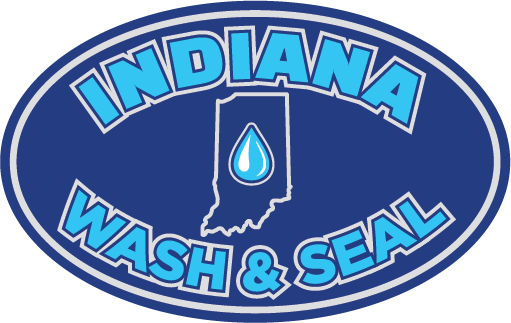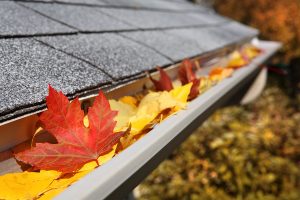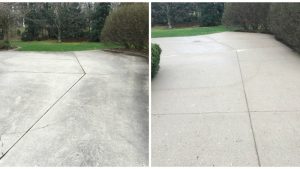Concrete is a versatile and durable material used in various construction projects, from driveways and sidewalks to patios and floors. Despite its strength, concrete is not impervious to stains, damage, and wear over time. Environmental factors, heavy traffic, spills, and other elements can compromise the integrity and appearance of concrete surfaces. One of the most effective ways to protect your concrete is by applying a high-quality sealer. Sealers act as a barrier against moisture, stains, and abrasions, extending the life of your concrete and maintaining its aesthetic appeal. Here’s a comprehensive guide to understanding the importance of concrete sealers and how they can help protect your surfaces.
Understanding Concrete Sealers
Concrete sealers are protective coatings that are applied to the surface of the concrete to prevent damage from water, chemicals, oil, and other contaminants. They work by filling the pores of the concrete, creating a layer that resists the penetration of liquids and other materials. Sealers can be used on both new and existing concrete surfaces, and they come in various types, each offering different levels of protection and finishes.
The most common types of concrete sealers include:
- Penetrating Sealers: These sealers soak into the concrete and form a chemical barrier that protects against water and contaminants. They are ideal for surfaces exposed to moisture, such as driveways, sidewalks, and pool decks. Penetrating sealers typically don’t alter the appearance of the concrete, making them a good choice for maintaining a natural look.
- Acrylic Sealers: These are surface sealers that form a thin protective film on the concrete. Acrylic sealers are available in water-based and solvent-based formulas, offering different levels of gloss. They are commonly used on decorative concrete surfaces, as they enhance the color and provide a glossy finish. However, they may require more frequent reapplication compared to penetrating sealers.
- Epoxy Sealers: Epoxy sealers provide a thick, durable layer of protection that is highly resistant to chemicals, abrasions, and stains. They are often used in high-traffic areas such as garages, warehouses, and industrial floors. Epoxy sealers are available in various finishes, including clear, colored, and metallic, allowing for customization of the concrete’s appearance.
- Polyurethane Sealers: Similar to epoxy sealers, polyurethane sealers offer strong protection against wear and tear. They are UV-resistant, making them suitable for outdoor use. Polyurethane sealers provide a glossy finish and are often used on concrete surfaces that require a high level of durability, such as patios, driveways, and commercial floors.
Benefits of Sealing Concrete
Applying a sealer to your concrete surface offers several benefits that go beyond just protecting it from stains and damage. Our friends at Baird Foundation Repair have provided us with some of these benefits:
- Protection Against Stains and Spills: Concrete is porous, meaning it can absorb liquids and stains easily. Sealing the concrete creates a barrier that prevents oils, chemicals, and other substances from penetrating the surface, making it easier to clean up spills and preventing permanent staining.
- Prevention of Cracks and Surface Damage: Sealed concrete is more resistant to environmental factors that can cause damage, such as freeze-thaw cycles, UV exposure, and moisture. A sealer helps prevent water from seeping into the concrete, which can lead to cracks and spalling when the water freezes and expands.
- Enhancement of Aesthetic Appeal: Sealers can enhance the natural color of the concrete or add a glossy finish, making the surface look more vibrant and polished. This is especially beneficial for decorative concrete surfaces, such as stamped or stained concrete, where the sealer can highlight the patterns and colors.
- Extended Lifespan of the Concrete: By protecting the concrete from wear and tear, a sealer helps extend the life of the surface. This means you won’t have to worry about frequent repairs or replacements, saving you time and money in the long run.
- Easier Maintenance: Sealed concrete is easier to clean and maintain. The smooth, non-porous surface prevents dirt, grime, and debris from becoming embedded in the concrete, reducing the need for intensive cleaning and making routine maintenance more manageable.
Choosing the Right Sealer
Selecting the appropriate sealer for your concrete surface depends on various factors, including the location of the concrete, the level of traffic it experiences, and your desired finish. Here are some tips to help you choose the right sealer:
- Consider the Environment: For outdoor surfaces exposed to weather conditions, choose a sealer that offers UV resistance and protection against moisture. Penetrating sealers or polyurethane sealers are often suitable for these areas.
- Assess the Traffic Level: High-traffic areas, such as driveways and commercial floors, require a sealer that can withstand heavy use and resist abrasions. Epoxy and polyurethane sealers are ideal for these situations due to their durability.
- Determine the Desired Finish: If you want to enhance the color of your concrete or achieve a glossy finish, acrylic or polyurethane sealers are excellent choices. For a natural look, opt for a penetrating sealer that doesn’t alter the appearance of the concrete.
- Check for Compatibility: Ensure that the sealer you choose is compatible with the type of concrete surface you have. Some sealers work better on specific types of concrete, such as stamped, stained, or polished concrete.
Application and Maintenance of Concrete Sealers
Applying a concrete sealer is a straightforward process, but it requires careful preparation to ensure optimal results. Here are the steps to properly seal your concrete surface:
- Clean the Surface: Before applying the sealer, make sure the concrete surface is clean and free of dirt, grease, and stains. Use a pressure washer or a concrete cleaner to remove any contaminants.
- Repair Any Damage: Inspect the concrete for cracks, holes, or other damage. Repair any imperfections before applying the sealer to ensure a smooth and even finish.
- Apply the Sealer: Depending on the type of sealer, you can use a brush, roller, or sprayer to apply it to the concrete surface. Follow the manufacturer’s instructions for the recommended application method and coverage rate.
- Allow for Drying Time: After applying the sealer, allow it to dry completely before using the concrete surface. Drying times vary depending on the type of sealer and environmental conditions, so check the product label for specific guidance.
- Regular Maintenance: To maintain the protection offered by the sealer, clean the concrete surface regularly and reapply the sealer as needed. The frequency of reapplication depends on the type of sealer and the amount of wear and tear the surface experiences.
Conclusion
Protecting your concrete from stains and damage with sealers is a smart investment that enhances the durability, appearance, and lifespan of your surfaces. By choosing the right sealer and applying it correctly, you can safeguard your concrete against the elements, prevent costly repairs, and maintain its beauty for years to come. Whether you’re sealing a driveway, patio, or industrial floor, a high-quality concrete sealer is essential for ensuring long-lasting performance and protection.



